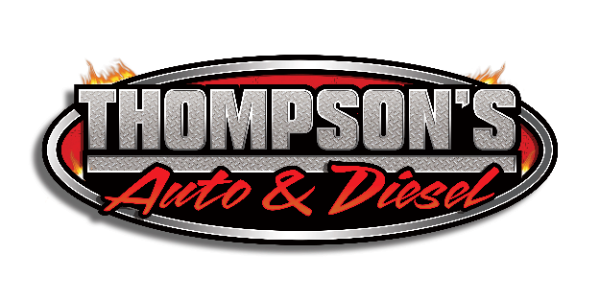When it comes to fleet repair, few systems are as critical to vehicle safety and performance as the brake system. Whether your fleet consists of light-duty vans, medium-duty delivery trucks, or heavy-duty commercial vehicles, regular brake inspections at Thompson’s Auto & Diesel Repair are non-negotiable. Fleet vehicles operate under much harsher conditions than personal vehicles—they endure frequent stops, carry heavy payloads, and log significantly more miles in less time. All of these factors accelerate brake system wear and increase the importance of reliable, preventive maintenance.
The Anatomy of Brake Inspections in Fleet Repair
A comprehensive brake inspection with the professionals at Thompson’s Auto & Diesel Repair in the context of fleet repair goes well beyond a quick visual check. Our professional fleet repair technicians follow a systematic approach that includes:
- Brake Pad and Shoe Thickness Measurement: Pads and shoes wear down over time, and technicians use precise calipers to measure remaining thickness. If these components fall below manufacturer specifications, they need immediate replacement to avoid rotor or drum damage.
- Rotor and Drum Condition: Warped, scored, or overheated rotors can reduce stopping power and cause vibrations. In fleet repair, these components are inspected for cracks, hot spots, and minimum thickness.
- Caliper and Wheel Cylinder Operation: Seized calipers or leaking wheel cylinders can create uneven brake application, leading to rapid wear and poor braking performance.
- Brake Lines and Hoses: These are inspected for leaks, dry rot, corrosion, and abrasion. In high-mileage fleet vehicles, aging rubber lines are a common failure point.
- Brake Fluid Quality: Brake fluid attracts moisture, which reduces braking efficiency and corrodes internal system components. During fleet repair, fluid is checked with a test strip or electronic tester, and flushed if water content is too high.
- Parking Brake and Brake Hardware: In commercial vehicles, a properly adjusted parking brake is essential. Technicians inspect linkages, cables, and springs for correct function.
- Air Brake System (for heavy-duty fleets): These systems are inspected for air pressure retention, slack adjuster settings, air dryer functionality, and leaks in the compressor system.
Each of these steps is essential in a fleet repair setting because a single failure point can compromise an entire vehicle—and by extension, disrupt business operations.
Consequences of Ignoring Brake Inspections
Skipping brake inspections in a fleet repair program can lead to serious consequences:
- Extended Stopping Distances: Worn pads and air in the lines reduce braking performance, particularly dangerous in wet or high-speed conditions.
- Vehicle Downtime: A vehicle pulled from service due to brake failure represents lost revenue, missed deliveries, and potential customer dissatisfaction.
- Costlier Repairs: Allowing brake components to wear past their service life can damage rotors, drums, or wheel bearings, turning a $200 repair into a $2,000 issue.
- DOT Violations and Fines: During roadside inspections, brake problems are one of the most common reasons commercial vehicles are cited or taken out of service.
- Safety and Liability Risks: Brake failure can cause collisions, leading to injury, property damage, and lawsuits. Proper fleet repair reduces the chance of catastrophic accidents.
How our Fleet Repair Shop Adds Value
Our trusted fleet repair shop doesn’t just perform inspections—we implement a full-service maintenance program tailored to your specific needs. This program tracks brake system wear across the entire fleet using fleet management software and digital inspections. By logging mileage, usage patterns, and brake service history, we can anticipate maintenance needs and proactively schedule service to prevent failures.
Many modern fleet repair centers like Thompson’s Auto & Diesel Repair also offer predictive analytics based on vehicle telematics, helping managers optimize brake service intervals and reduce costs. Instead of relying on guesswork, you can use data to drive decision-making.
Additionally, our fleet repair shop will ensure all parts meet or exceed OEM standards, especially for brake pads and rotors. Subpar aftermarket components can wear faster, generate more heat, and reduce braking performance.
Trust Thompson’s Auto & Diesel Repair With Your Fleet Needs
Brake system inspections are not just an item on a checklist—they are the foundation of fleet repair safety and reliability. Commercial vehicles demand more from their braking systems, which means inspections must be more thorough and more frequent. By making brake service a priority in your fleet repair strategy, you reduce the risk of breakdowns, avoid compliance issues, and protect both drivers and the public.
For best results, partner with our certified fleet repair facility where we understand the unique brake repair needs of your vehicles and provide transparent reporting, consistent service, and 24/7 fleet support. When it comes to keeping your business moving safely, brakes are the last place you want to cut corners.

